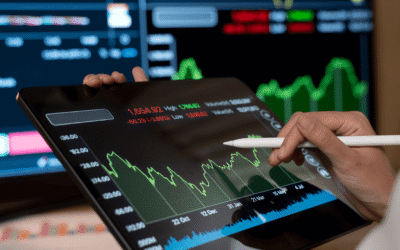Why Choose ATEX Digital Cameras for Industrial Applications in Dangerous Zones
 Why Choose ATEX Digital Cameras for Industrial Applications in Dangerous Zones
Why Choose ATEX Digital Cameras for Industrial Applications in Dangerous Zones
In hazardous industrial environments, safety and compliance are top priorities. Industries like oil & gas, chemical processing, mining, and manufacturing require specialized equipment to ensure the safety of personnel and assets. One such essential tool is the ATEX digital camera, designed specifically for hazardous zones where flammable gases, dust, and volatile substances pose significant risks.
This article explores the importance of ATEX digital cameras, their applications, key features, and why they are the preferred choice for industrial applications in dangerous zones. Additionally, we will highlight the significance of Explosion-proof cameras in ensuring operational safety and regulatory compliance.
Understanding ATEX Certification
ATEX (Atmosphères Explosibles) is a European Union directive that sets safety standards for equipment used in explosive environments. Any device marked as ATEX-certified has undergone rigorous testing to ensure it can operate safely in hazardous areas without igniting the surrounding atmosphere.
ATEX certification is divided into two primary categories:
- Zone 0, 1, 2: Areas where explosive gases are present continuously, intermittently, or occasionally.
- Zone 20, 21, 22: Areas where combustible dust is present under similar conditions.
A certified ATEX digital camera ensures compliance with safety regulations while providing high-quality imaging capabilities.
Why Are ATEX Digital Cameras Essential for Hazardous Environments?
1. Explosion-Proof Design for Maximum Safety
Explosion-proof cameras are built with rugged, flameproof enclosures that prevent internal sparks or heat from triggering an explosion. These cameras are engineered to withstand extreme environmental conditions while maintaining safe operation in volatile zones.
2. High-Quality Imaging in Harsh Conditions
ATEX cameras are equipped with high-resolution sensors, infrared (IR) capabilities, and thermal imaging, making them ideal for monitoring industrial processes, equipment inspections, and security surveillance.
3. Durability and Reliability
These cameras are designed with corrosion-resistant materials to withstand harsh industrial environments, including extreme temperatures, humidity, and chemical exposure.
4. Remote Monitoring and Connectivity
Modern ATEX digital cameras offer wireless connectivity, enabling real-time monitoring from a safe distance. Features like Wi-Fi, 4G, and cloud integration allow seamless data transmission to control rooms.
5. Regulatory Compliance and Risk Mitigation
Using ATEX-certified explosion-proof cameras ensures compliance with international safety standards (IECEx, NFPA, OSHA), reducing legal liabilities and workplace risks.
Key Features to Look for in an ATEX Digital Camera
When selecting an ATEX digital camera, consider the following essential features:
- ATEX and IECEx Certification: Ensures compliance with hazardous area safety standards.
- High-Resolution Imaging: Full HD, 4K, or thermal imaging options for clear visuals.
- Night Vision and Infrared (IR) Capabilities: Enables monitoring in low-light conditions.
- Wireless and Remote Access: Supports real-time surveillance via mobile or desktop applications.
- Rugged and Weatherproof Build: IP-rated for resistance to dust, moisture, and temperature variations.
- Explosion-Proof Housing: Prevents accidental ignition in volatile environments.
- Long Battery Life: Ensures extended operation in field conditions.
Industries That Benefit from ATEX Digital Cameras
1. Oil & Gas
Used for pipeline inspections, offshore rig monitoring, and detecting gas leaks in refineries.
2. Chemical Plants
Ensures safe process monitoring in facilities handling volatile chemicals.
3. Mining and Construction
Enhances safety by monitoring explosive-prone underground and surface operations.
4. Manufacturing
Monitors high-risk areas in production lines where combustible materials are present.
5. Pharmaceutical and Food Processing
Ensures compliance in industries where dust and volatile substances create potential hazards.
Conclusion
For more information on explosion-proof camera solutions, visit SharpEagle Technology.
ATEX digital cameras are indispensable for industrial applications in hazardous zones. With their explosion-proof design, durability, and advanced imaging capabilities, they provide a crucial layer of safety and compliance in dangerous environments. By investing in ATEX-certified explosion-proof cameras, industries can enhance workplace safety, improve operational efficiency, and mitigate risks associated with explosive atmospheres.
For businesses operating in hazardous zones, choosing an ATEX digital camera is not just a regulatory necessity but a vital step toward safeguarding personnel and assets.







